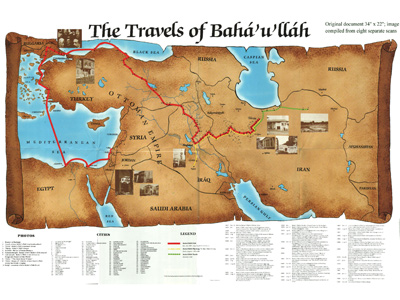

A map of Bahá'u'lláh's travels after he was exiled from Iran
© the National Spiritual Assembly of the Bahá'ís of the Hawaiian Islands, 1991
History 7 - Some Historical Notes
When the Báb announced his Message in 1844, it provoked a violent reaction from the Government and the clergy. The Báb’s purpose was peaceful and was no challenge to the state, yet he was imprisoned, and finally executed in 1850. He declared that his religion was to prepare the way for the promised World Teacher (the Promised One of all religions), and soon afterwards, it became apparent that Bahá’u’lláh was this World Teacher. Most of the followers of the Báb accepted Bahá’u’lláh and became known as Bahá’ís. The Muslim clergy in Iran have long regarded Bahá’ís as ‘heretics’, and despite being Iran’s largest religious minority, they are denied any form of protection from persecution. This persecution again intensified following the establishment of the Islamic Republic in 1979.
Ready for more?
not all...
quizzers. Try to win a coveted spot on our Hall of Fame Page.






